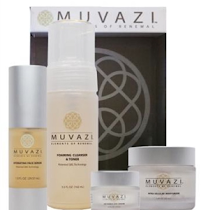I'm often asked these two questions the most, so this seems like a great place to start!
"How do you print your digital files?"
This really depends on what my final project is, below I have broken this question out into two answers. Let me exit geek talk for a minute and give you a few definitions. These are words I will reference often -
Digital - meaning the entire project was created in a graphics program and printed finished.
Hybrid - meaning printing out the digital elements that are then mixed with traditional supplies.
Printing Digital Layouts: Digital layouts are those that are created from start to finish in your graphics editor software, like the layout below. I typically create these in a 240 dpi - 300dpi (resolution) to the largest dimensions that I plan to print. Example if my target is 8x10 then when I start my Photoshop document I begin with an 8x10 at 300 resolution. The layout below was created 12x12 so when printed on 8x10 photo paper it will have a output of 8x8. Once printed, they can be placed in a traditional album. Another option is to upload the spreads to a service like Shutterfly.com and print them into photobooks. Photobooks make AWESOME Christmas gifts! (I will share a video on my youtube in a few days of a couple of photobooks that I've done in the past).
Here is an example of a digital layout that I created of my daughter Brittany Gibbs. I used the Scarlet collection from MarionSmithDesigns.com. When I have 20 of these made up - off to Shutterfly they go for binding!
To create this paper I used the Scarlet collection by MarionSmithDesigns.com and Photoshop CS6.
Printing for Hybrid: Printing for hybrid layouts I usually do on my home printer. I currently have 2 printers HP4500 deskjet, and a HP Laserjet CP1525. Neither printers are very fancy. Sometimes I like the look of the Inkjet and sometimes I want the perminent printing of a laserjet just depends on the project. Another option - I know that many prefer to take their digital files to an office copy center and print them there. This is an excellent alternative since they usually have the latest and greatest equipment and the resolution is better than anything you have at home. The biggest expense obviously is the ink for home printing.
Here is a short video explaining the "printing" process.
Since Hybrid is "printed" here is a sample of a hybrid project that I recently shared in a previous post.
"What type of Paper do you use to print your digital files?"
This is always a fun question - because it really depends on your final project. If you are printing this out on your home system, then explore with papers & stocks that you have around the house. I would say that 90% of mine are printed on Georgia Pacific 110lb cardstock. If I'm making mini albums I print on all types of things like Grunge Paper, Canvas, cardstock, and fabric. You may want to print interior pages on 65lb cardstock to cut down on the bulk. It really doesn't matter, just make sure that your printer is capable of handling the material. Here are some suggested Materials for inkjet printers (but please check with your manufactor for settings and limitations):
- 110lb Cardstock - this is a super thick stock that is great for layouts, ephemera and minibooks.
- Canvas Paper - this will give you an interesting texture that looks like a painting.
- Transparencies - LOVE this idea for filler for my mini books
- Standard copy paper - (if you are making mini books, planners, you may want this lighter paper for signatures.
- Fabric like Muslin
- Ribbon (oh this is really fun!)
Hopefully you have learned some things today, and I've answered some of your questions. Next week we will go a little deeper into the benefits of digital work, and how you can slowly introduce some of the elements into your workflow.
Thanks for stopping in,
Tonya Gibbs
http://www.psychomomscrapbooks.blogspot.com















Yesssss! I sent a message on Marion's store asking about this! Tada!!! Thanks Tonya, this is great! My color printer currently only has black ink in it so that could cost me an arm and a leg to fill with colors to print Marion's gorgeous colorful patterns! On the other hand, offices might cost me way more on the long run... Hmm decisions decisions!
ReplyDeleteThis comment has been removed by the author.
ReplyDeleteThanks Tonya! A very timely tutorial as I struggle somewhat with printing digital collage sheets.
ReplyDeleteI look forward to watching more tutorials!
I must admit that your post is really interesting. I have spent a lot of my spare time reading your content. Thank you a lot! Dublin Sticker Printing
ReplyDelete